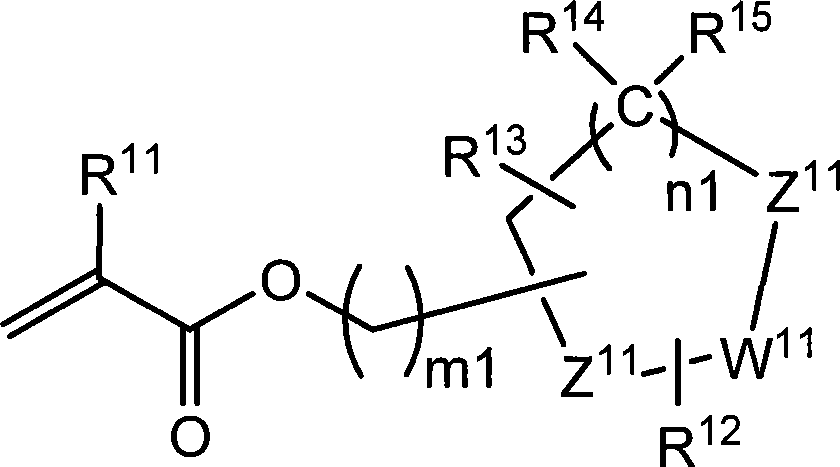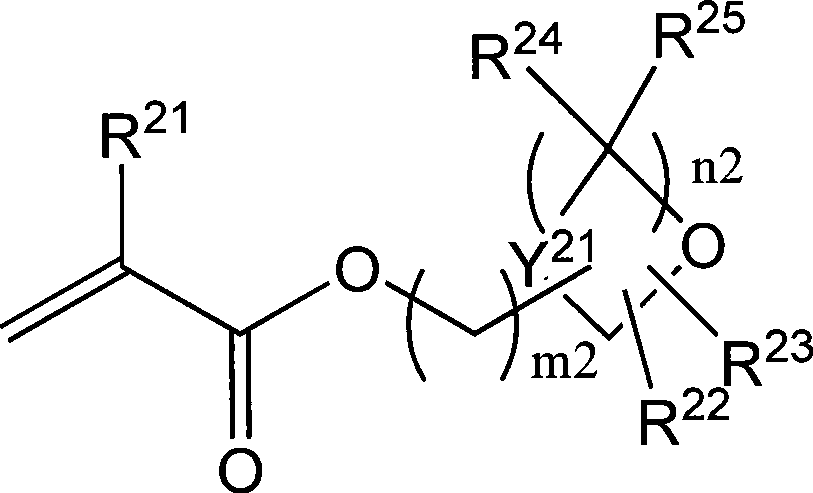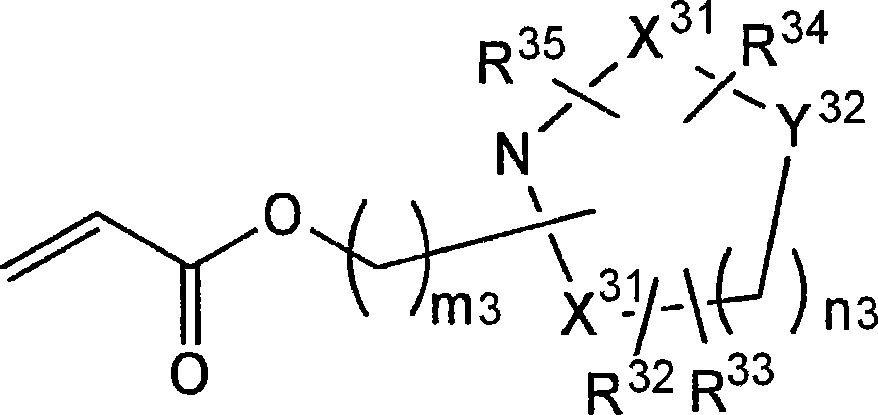Curing composition for nano-imprint lithography and pattern forming method using the same
A curable composition and nano-imprinting technology, applied in photosensitive materials for optomechanical equipment, optics, optomechanical equipment, etc., can solve substrate cracking, no etching process and stripping process, etchant and resist Deterioration of agent wettability and other problems
- Summary
- Abstract
- Description
- Claims
- Application Information
AI Technical Summary
Problems solved by technology
Method used
Image
Examples
Embodiment 1
[0410] As polymerizable unsaturated monomers, accurately weigh 19.496g of γ-butyrolactone acrylate monomer (R-01), 68.24g of tripropylene glycol diacrylate monomer (S-04), ethylene oxide modified three Methylolpropane triacrylate (S-05) 9.748g; As a photopolymerization initiator, precise name 2,4,6-trimethylbenzoyl-ethoxyphenyl-phosphine oxide (Lucirin TPO manufactured by BASF Corporation) -L) (P-1) 2.50g; as a surfactant, precisely called EFTOP EF-122A (fluorosurfactant, W-1) 0.02g, mixed at room temperature for 24 hours to prepare a uniform solution. The composition ratio of the polymerizable unsaturated monomer used here is shown in Table 1, and the compounding ratio of a composition is shown in Table 2.
[0411] This prepared composition was spin-coated on a 4-inch glass substrate with a thickness of 0.7 mm on which an aluminum (Al) coating film with a film thickness of 4000 angstroms was formed to a coating thickness of 5.0 μm. The coating base film that spin coating is ...
Embodiment 2
[0413] As a polymerizable unsaturated monomer, accurately weigh 38.97 g of α-acryloyloxy-β, β-dimethyl-γ-butyrolactone monomer (R-2) and neopentyl glycol hydroxytrimethylacetate Diacrylate monomer (S-2) 48.71g, propylene oxide modified trimethylolpropane triacrylate (S-6) 9.742g; as a photopolymerization initiator, it is called 2,4,6-trimethyl 2.5 g of benzoyl-ethoxyphenyl-phosphine oxide (Lucirin TPO-L manufactured by BASF Corporation) (P-1); Fluorosilicone-based surfactant, W-3), mixed at room temperature for 24 hours to prepare a homogeneous solution. This composition was exposed and patterned in the same manner as in Example 1, and the characteristics of the composition were examined. The results are shown in Table 3. From the results of Table 3, it can be seen that the composition of the present invention can comprehensively satisfy photocurability, adhesion, mold release, film residue, pattern shape, applicability (spin coatability, slit coatability) ), etching.
Embodiment 3~ Embodiment 27
[0415] In the same manner as in Example 1, the polymerizable unsaturated monomers shown in Table 1 were mixed at the ratios shown in Table 2 to prepare the compositions described in Table 2. This prepared composition was patterned in the same manner as in Example 1, and the characteristics of the composition were examined. The results are shown in Table 3. Any one of the compositions of Examples 3 to 27 can comprehensively satisfy photocurability, adhesiveness, release property, residual film property, pattern shape, applicability (spin coatability, slit coatability), Etching.
PUM
| Property | Measurement | Unit |
|---|---|---|
| Depth | aaaaa | aaaaa |
Abstract
Description
Claims
Application Information
 Login to View More
Login to View More - Generate Ideas
- Intellectual Property
- Life Sciences
- Materials
- Tech Scout
- Unparalleled Data Quality
- Higher Quality Content
- 60% Fewer Hallucinations
Browse by: Latest US Patents, China's latest patents, Technical Efficacy Thesaurus, Application Domain, Technology Topic, Popular Technical Reports.
© 2025 PatSnap. All rights reserved.Legal|Privacy policy|Modern Slavery Act Transparency Statement|Sitemap|About US| Contact US: help@patsnap.com



